The Mighty Montana Moose
Moose, like sharks, get a bad rap. Not generally fierce or mean, they docilely mind their own business. But unless they are cornered or interfered with, they will charge. Their size is most intimidating. In Montana, the Shiras Bull Moose is the smallest of the subspecies and could weigh approximately 1,000 pounds with an antler span of four-five feet.
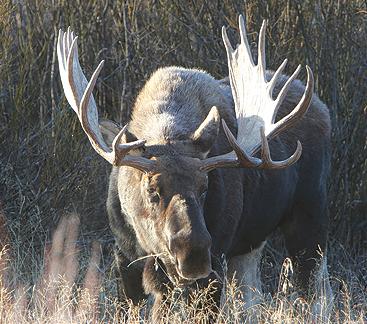
Homely they might look with their long noses, drooping lip, shoulder hump, and noticeable dewlap, more commonly called the bell, hanging from their necks. They rise to about seven feet at the shoulder on spindly legs, adding to their ungainliness. Once the velvety antlers appear on the males, this living tissue, supplied by a network of blood vessels, continues to grow throughout the summer. By late August, the velvet is rubbed off leaving a gleaming, gigantic rack representative of the bull’s dominance and impressiveness for luring the cow.
Mainly browsers of willows and hardwood and softwood trees, moose bide their time on both land and water. They’re great waders and swimmers, loving to plunge into the depth of rivers and marshy areas foraging for tidbits of aquatic plants. It’s a sight to see when a massive bull pulls his head out of the water, draped in an overflow of river or pond, with grasses and aquatic debris hanging tenuously from his rack. But don’t be fooled by this “casual” demeanor. Whether in deep snow, water, or from within bushes, moose are nimble and light-footed, and with their powerful strength, they can move with a speed that challenges any animal or human.
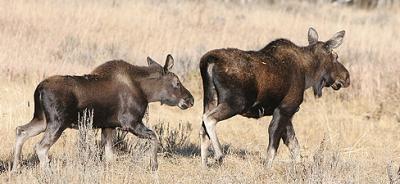
Moose are solitary and elusive animals until the rut season arrives in mid-September/October when they become more social and gregarious. The rut can be a testy time for the bulls when their hormones are raging and they compete with other bulls for mating privileges. Cows are more often aggressive after calving.
With a gestation period of eight months, rusty-colored calves are born in May-June and are highly protected by their mother. The calves stay with the mother for about a year or until she breeds again but they still hang around her, not wanting to be left behind. Moving in bushes and wading in water together, the mother-calf bond can be seen as they nose- nuzzle during this formative first year, while the mother teachers her youngster the ways of the wild.
If you should see one or more ambling casually or feeding on bushes, be sure to keep a distance of at least 25 yards (50 yards is even better) away. Make sure you don’t cut off the moose’s path or else you might find yourself chased up a tree!
Carol Polich’s nature photography has taken her to the African and Asian continents and throughout the West where she has captured not only the “big” things in nature, but the “little” things as well. Her photographs have won a National Geographic Traveler Photo contest and appeared in numerous magazines. Her first book, Portrait of Paradise, published in 2007 by Farcountry Press, covers the Greater Yellowstone Ecosystem.
Moose Facts
• A moose has no upper teeth in the front of its mouth, so it uses its strong upper lip to grab leaves and young branches.
• In summer, an adult moose eats about 60
pounds of leaves and pond plants every day.
• Moose can swim 15 miles without stopping.
• Moose can’t see well but have strong sense of smell and hearing. Their long nose can smell a predator a mile away.
• Wolves and bears will attack moose but are rarely successful unless the moose is newborn, sick, dying, or stuck in snow.
• The biggest danger for moose is starving from lack of food in winter.
Brush with a Moose: A warning to Mountain Bikers
I paddled my bike up Sourdough Creek trail to bow hunt the back basins of the drainage. After three rainy days, I headed back. I was breezing down the right-hand track, rounding the blind corner when 30 feet in front of me was a full-antlered bull moose.
He wasn’t going to give up the trail, probably sick and tired of being run off by the many joggers, hikers, bikers, and their dogs. The trail was narrow with steep rock on either side. By the time I skidded to a stop and dismounted, the bull was 25 feet away. Too close. I was in a fix and held the bike in front of me. I was thinking I would throw the bike at his polished antlers and jump off the rocks into the creek and probably die.
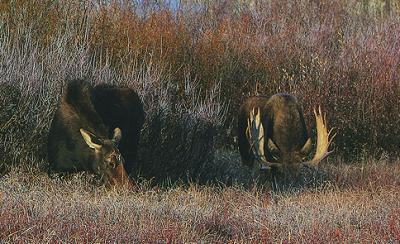
The bull laid back his ears and moved forward. I stepped to my left onto the grassy berm. The bull rushed past on my right and never looked back. I could have touched his flanks but knowing how accurate a moose is with his rear hoofs, I did not. I thanked my lucky stars and promised to be good the rest of my life.
Moral of the story: don’t fly around blind corners. If I had not been such a slowpoke biker, I would have slammed into those sharp brow tines and become another statistic on the trail.
Joe Gutkoski is a landscape architect, mountain tracker, and river floater living in Bozeman.
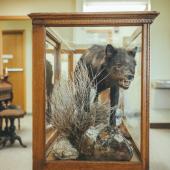
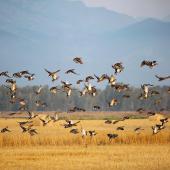
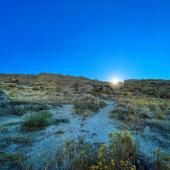
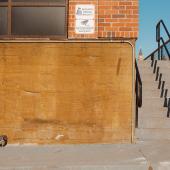
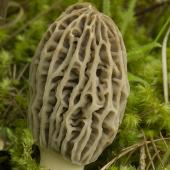
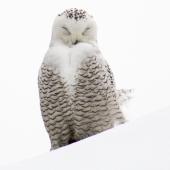
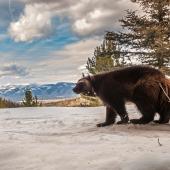
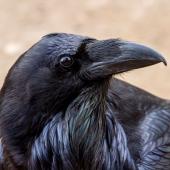
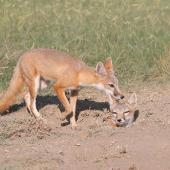
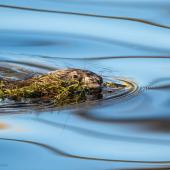
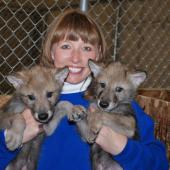
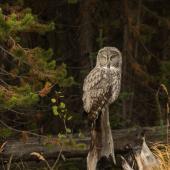
Leave a Comment Here